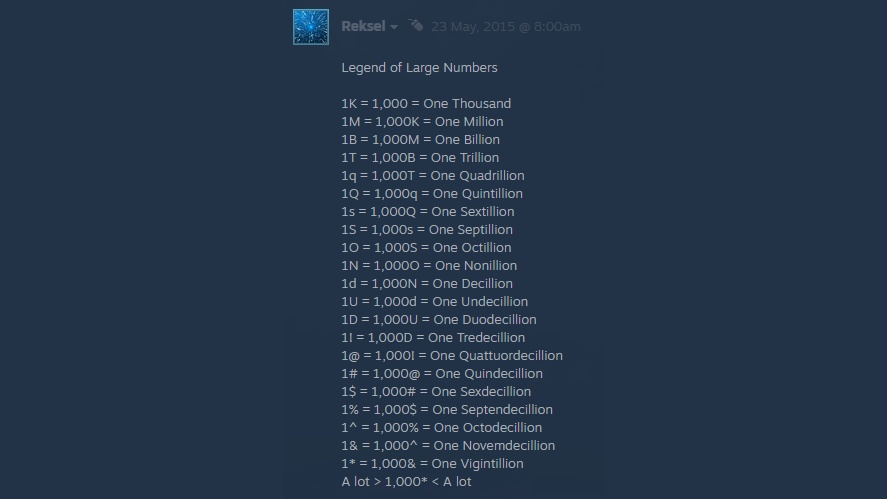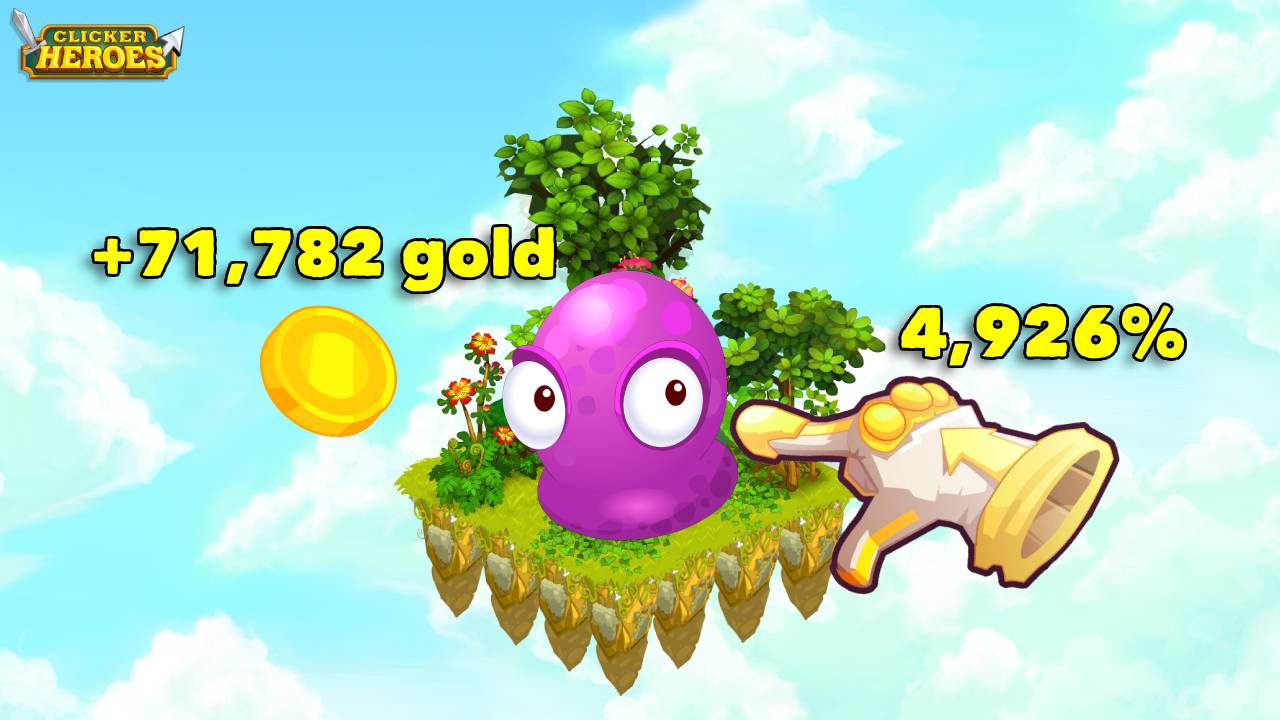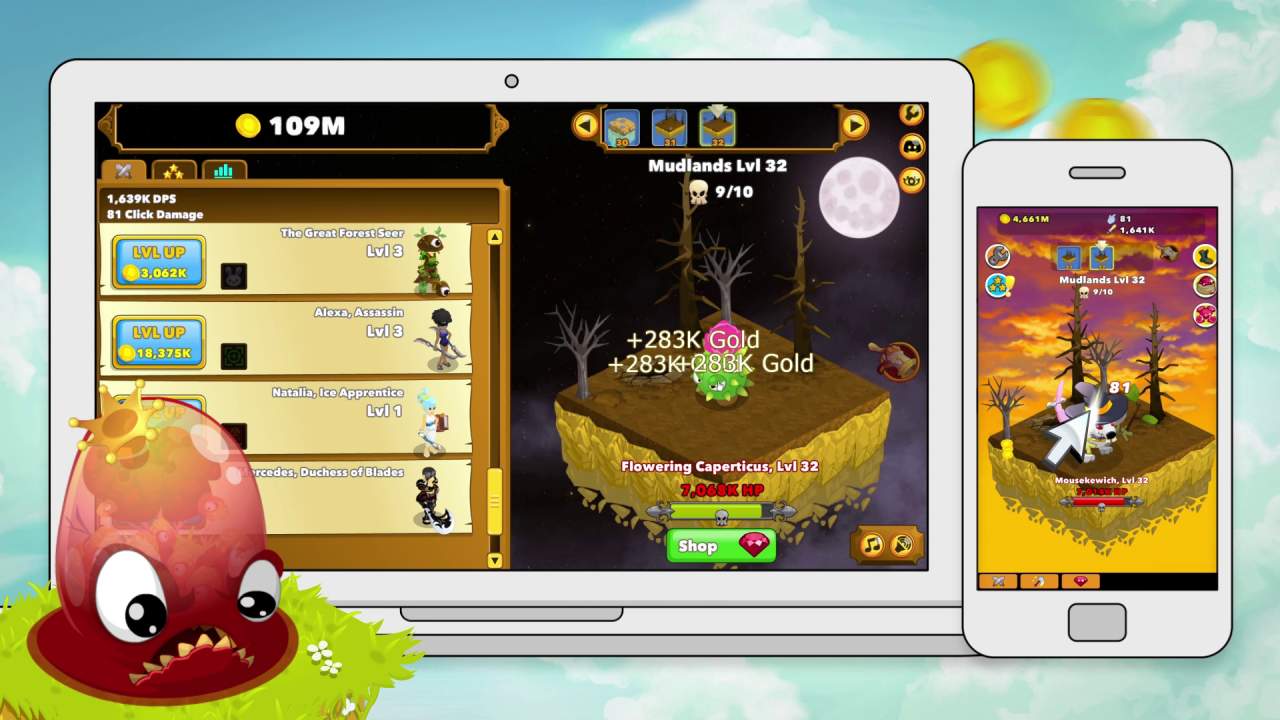Clicking monsters in Clicker Heroes might start simple, but it quickly becomes a cosmic math journey. What begins as basic idle game mechanics rapidly escalates into numbers so huge they defy everyday understanding.
As damage and gold multiply, you’ll soon be dealing with figures that make billions look like pocket change. Think: numbers larger than the grains of sand on Earth or even atoms in the human body.
This guide breaks down the mind-bending scale of Clicker Heroes numbers, what symbols like “1%” or “1*” actually mean, and how these compare to real-world magnitudes.
Understanding Clicker Heroes’ Numbering System
Idle games often thrive on exponential growth, but Clicker Heroes takes this to an entirely different level.
Its numbers go far beyond millions and billions, entering a space where standard math tools start to break down.
To help you make sense of these absurd values, the game uses a hybrid system of prefixes, letters, and eventually abstract symbols.
Number Prefixes in Clicker Heroes
Early on, numbers scale in familiar ways:
- K = Thousand = 1e3 = 1,000
- M = Million = 1e6 = 1,000,000
- B = Billion = 1e9 = 1,000,000,000
- T = Trillion = 1e12 = 1,000,000,000,000

But then it starts getting wild:
- N, U, D, etc.: Each representing an exponential leap, akin to moving from nonillions to duodecillions.
- Symbols like “!”, “@”, “#”, “$”, “%”: These show up when the game reaches numbers so high that even letters aren’t enough.
When you start seeing values like 1% or 1*, you’re deep into scientific notation territory, think 1e54 to 1e63 and higher. At this point, numbers aren’t just large; they’re practically abstract.
What Is the Biggest Number in Clicker Heroes?
So, what is the biggest number ever you’ll ever see in Clicker Heroes?
During late-game progression, you regularly encounter values greater than 1e306, which is a number known as 1 uncentillion, which has 306 zeros.
To put that in perspective:
- A googol (1e100) is tiny by comparison.
- The estimated number of grains of sand on Earth? About 7.5e18.
- The number of particles in the observable universe? Roughly 1e80.
In other words, Clicker Heroes reaches numerical heights far beyond biggest number in the world, driven by its idle mechanics and exponential scaling.
Comparing Clicker Heroes Numbers to Real-World Quantities
Clicker Heroes isn’t just about clicking monsters; it’s about watching numbers climb to scales the human brain can barely fathom.
To put that into perspective, here’s how the game’s values stack up against real-world benchmarks.
Grains of Sand on Earth
Estimated total: ~7.5 × 10¹⁸ grains
That sounds like a lot, until you hit even a mid-game value like 1e30 in Clicker Heroes. Suddenly, a beach full of sand looks like a rounding error.
Seconds Since the Universe Began
Age of the universe: ~13.8 billion years, or ≈ 4.35 × 10¹⁷ seconds
A casual player can exceed 1e50 within a few weeks of play. In other words, your damage-per-click can outpace time itself.
Particles in the Observable Universe
Total: ~1 × 10⁸⁰ particles (protons, neutrons, electrons)
Late-game players regularly blast through 1e100 or more, meaning Clicker Heroes tracks values beyond the physical contents of the universe.
How Many Atoms Are in the Human Body?
Per adult human: ~7 × 10²⁷ atoms
Multiply that by 8 billion people, and you get roughly 5.6 × 10³⁷ atoms currently on Earth.
Impressive, but still minuscule compared to late-game Clicker Heroes numbers like 1e150.
Estimated Total Possible DNA Combinations
For a human genome (~3 billion base pairs): ≈ 4³⁰⁰⁰⁰⁰⁰ ≈ 10^1,800,000
This figure dwarfs anything you’ll hit in the game, but it’s a fun reminder that some real-world numbers are still more mind-blowing than anything in idle gaming.
Explore the Numbers Yourself – Scientific Notation Calculator
Ever stared at a number like 1e150 or 3.2e306 and thought, “What even is that?”. You’re not alone. These figures are so massive they’re hard to picture, unless you convert them.
👉 Head over to the calculator and experiment with the numbers!

Clicker Heroes Number Converter
Why Use Such Huge Numbers in Idle Games?
Ever wondered why idle games like Clicker Heroes crank numbers up to infinity and beyond?
These astronomical values aren’t just for show; they’re baked into the design to keep players hooked and progression satisfying.
Designed for Endless Progression
Idle clicker games thrive on the thrill of never hitting a wall.
The bigger the numbers, the more powerful you feel, and the more satisfying each upgrade becomes.
Watching your damage soar from millions to quintillions to incomprehensible values is part of the genre’s charm.
Prestige Systems and Resets
Every time you reset, you get stronger. That power boost comes with a price: even bigger numbers.

What once took hours to reach becomes your new starting point.
This loop of growth and reset is why Clicker Heroes numbers spiral so wildly. It keeps things feeling fresh.
How Developers Handle Numbers That Big
Of course, using numbers with hundreds of zeros isn’t as simple as slapping digits on a screen. Developers have to get creative to manage performance and make sense of the madness.
Scientific Notation and Symbolic Systems
To keep the game readable, developers trade in scientific notation.
Instead of showing you a full number with 300+ zeros, they compress it to 1e300.
Eventually, even notation gives way to symbols like !, @, and #, each representing leaps into entirely new number realms beyond named values.
Floating-Point Precision and Logarithmic Displays
At extreme scales, traditional math starts to break down. Developers switch to floating-point and logarithmic systems to maintain performance and accuracy.
Clicker Heroes uses smart rendering tricks so that, even when you’re dealing with numbers bigger than atoms in the universe, the game doesn’t skip a beat.
Final Thoughts — The Joy of Breaking the Universe
Clicker Heroes isn’t just about idle clicking; it’s about watching numbers explode in ways real-world math could never keep up with.
What starts as tapping for coins ends in scaling numbers that outpace time itself.
The absurdity becomes the fun. Because when you’re casually hitting 1e306, you’re not just playing a game; you’re rewriting the laws of scale.




